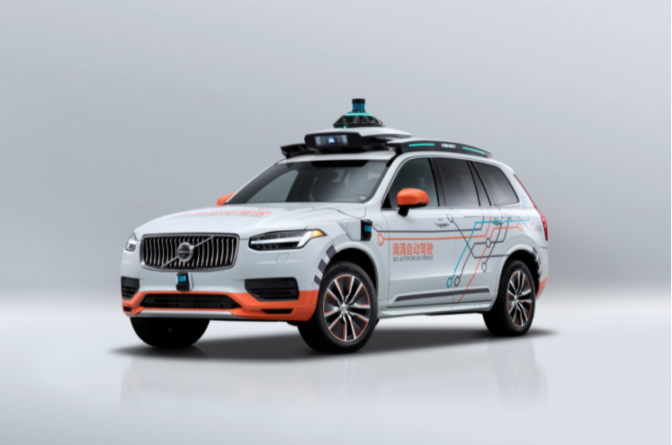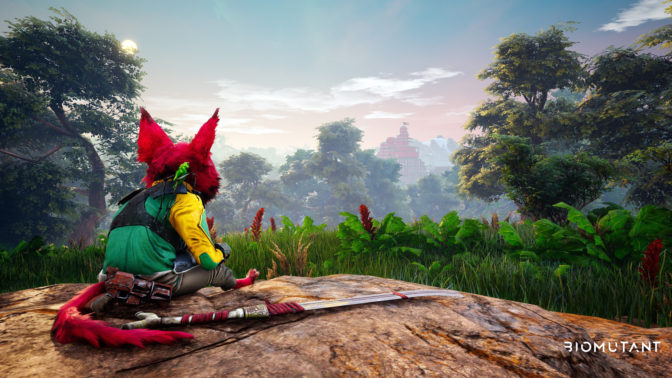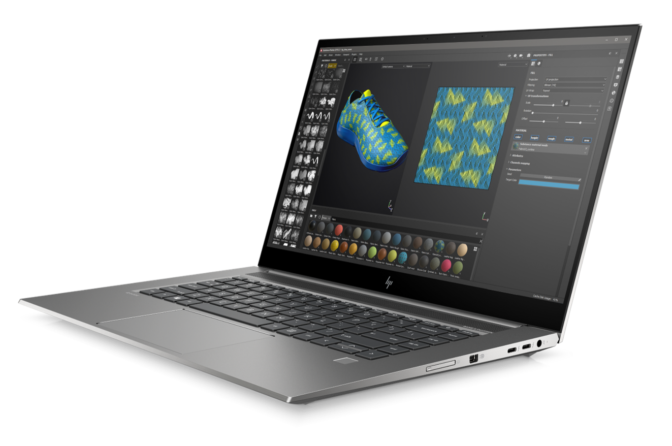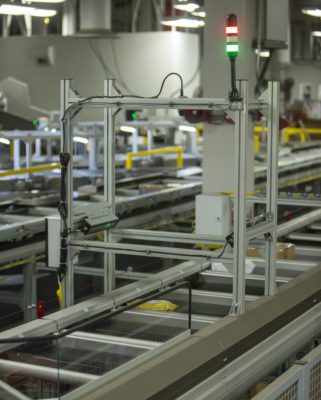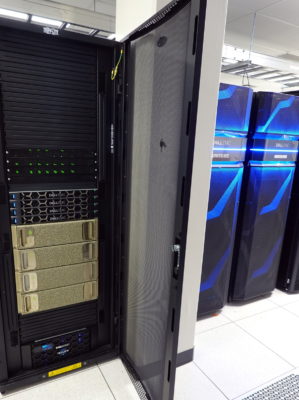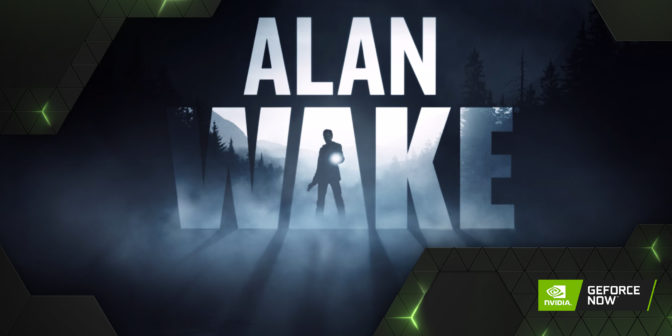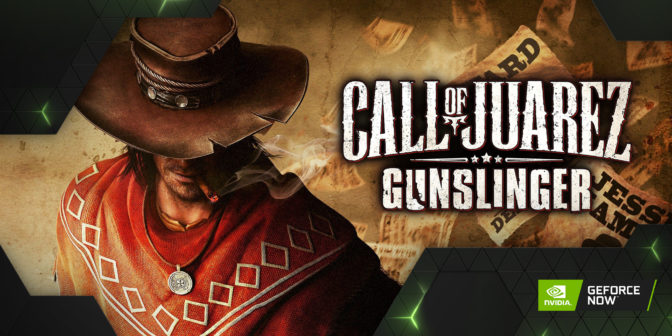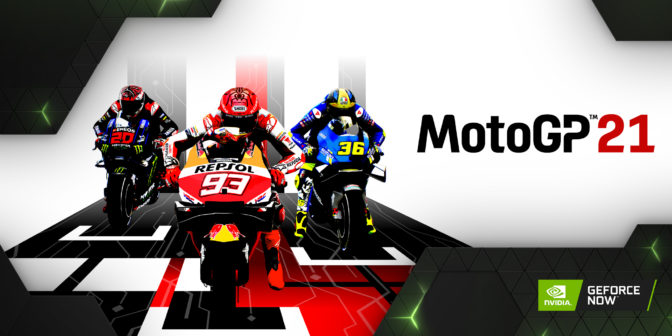Cloud computing and AI are pushing the boundaries of scale and performance for data centers.
Anticipating this shift, industry leaders such as Baidu, Palo Alto Networks, Red Hat and VMware are using NVIDIA BlueField DPUs to transform their data center platforms into higher performing, more secure, agile platforms and bring differentiated products and services to market.
NVIDIA BlueField DPUs are designed to meet the infrastructure requirements that modern data centers must offer for today’s cloud computing and AI workloads:
- Upgraded Efficiency: BlueField DPUs enable all available CPU resources to run business applications, freeing up CPUs that would otherwise have been used to support software-defined networking.
- Increased Ability to Scale: Cloud-native applications are highly distributed and create intensive “east-west” traffic within data centers. BlueField DPUs provide a high-throughput, low-latency network environment for scale-out applications.
- Leading-Edge Security: Multi-tenancy and infrastructure elasticity in cloud data centers pose privacy and confidentiality risks that are addressed by BlueField DPUs.
- Enhanced Performance: BlueField DPUs provide robust and powerful networking to handle the growing prevalence of GPU-accelerated computing in the cloud, enterprise and edge.
It can seem overwhelming for organizations to deliver on these new requirements quickly and efficiently, while also protecting each individual workload. Below are examples of how NVIDIA’s customers and partners are leveraging BlueField DPUs to offload, accelerate and isolate infrastructure software in ways that dramatically improve data center performance, scalability and security.
Baidu Delivers on Promise of Bare-Metal Clouds
Baidu has deployed NVIDIA BlueField DPUs for its scale-out bare-metal cloud infrastructure. One of the key advantages of bare-metal cloud computing lies in its ability to deliver predictable and consistent performance by allowing direct access to the hardware.
Traditional bare-metal infrastructure lacks the operational flexibility and agility that the virtualized cloud provides. BlueField empowers Baidu to easily provision bare-metal compute instances to millions of companies in China with high-speed networking and tenant isolation.
An ideal use-case for DPUs, NVIDIA BlueField has helped Baidu transform bare-metals from hardware-defined server infrastructure into software-defined, hardware-accelerated cloud platforms.
Red Hat Brings Composable Compute to the Edge
Red Hat closely collaborates with NVIDIA to enable GPU-accelerated AI computing and drive innovation across the entire stack.
The open-source software titan has developed a DPU-powered composable compute infrastructure to address the stringent requirements for performance, latency and security in edge data centers. When deployed in a fleet of 50,000 nodes, this state-of-the-art infrastructure would save up to $70 million through BlueField’s efficient software-defined, hardware acceleration engines.
At a basic level, Red Hat’s composable compute is optimized for the edge as it uses bare-metal as a service together with BlueField’s domain-specific hardware acceleration to boost the performance of enterprise workloads running on the flagship Red Hat Enterprise Linux operating system or the full-scale OpenShift Kubernetes platform.
As a leader in application containerization, Red Hat’s vision extends the software microservices concept to hardware, enabling zero-trust security and operational efficiency for enterprise IT and devops alike.
Palo Alto Networks Accelerates 5G-Native Security
5G wireless networks are set to reshape digital business and open up conversation about modern security concerns. At the forefront of cybersecurity, Palo Alto Networks has taken a unique approach to bring security forward to 5G networks.
Building on its expertise in network, cloud and device security, the company has created a 5G-native security solution that consists of 5G context-driven security, automation and service protection. To address the rigid data processing requirements of 5G, Palo Alto Networks has integrated its industry-leading next-generation firewall with NVIDIA BlueField DPUs.
The result is a software-defined, hardware-accelerated firewall architecture that will provide line-rate security processing at 100Gb/s speed. This innovative architecture is available today for service providers and enterprises for testing the technology.
VMware Redefines the Hybrid Cloud Architecture
At GTC 2020, VMware and NVIDIA announced a broad partnership to deliver both an AI-Ready Enterprise Platform, and a new architecture for data center, cloud and edge that uses BlueField DPUs to support existing and next-generation applications.
A critical component of the AI-Ready Enterprise Platform, the NVIDIA AI Enterprise software suite runs on VMware vSphere and is optimized, certified and supported by NVIDIA to help thousands of VMware customers in the world’s largest industries to unlock the power of AI.
Additionally, VMware is collaborating with NVIDIA to define a next-generation cloud architecture based on VMware Cloud Foundation and BlueField, and will offer increased performance, a zero-trust distributed security model and simplified operations. Known as VMware Project Monterey, this will help customers take advantage of both CPUs and DPUs while extending VMware infrastructure value to bare-metal applications for the first time.
Together, VMware and NVIDIA are building a high-performance, more secure, efficient and AI-ready cloud platform for the 300,000-plus organizations using VMware’s virtualization platform today.
Next Up: NVIDIA BlueField-3
Unveiled by NVIDIA CEO Jensen Huang during his GTC21 keynote address, BlueField-3 is the product of the company’s multiyear innovation roadmap, which will see a new BlueField generation every 18 months.
NVIDIA BlueField-3 redefines the art of the possible by delivering the industry’s first DPU to offer 400Gb/s Ethernet and InfiniBand networking with up to 10x the processing power of its predecessor.
Huang also announced NVIDIA DOCA 1.0, a powerful application framework that enables developers to rapidly create applications and services on top of NVIDIA BlueField DPUs. Every new generation of BlueField will support DOCA, which preserves the development investment as each DPU generation evolves.
For customers, this means that today’s applications and data center infrastructure will run even faster when BlueField-3 arrives.
Transforming the Data Center
NVIDIA and its broad partner ecosystem are on a mission to transform the data center by leveraging the NVIDIA BlueField family of data processing units to power the next wave of accelerated cloud and AI computing applications.
Learn more about NVIDIA BlueField data processing units and apply for early access to NVIDIA DOCA SDK.
Be sure to watch the sessions at GTC21 presented in partnership with Red Hat, Palo Alto Networks and VMware.

